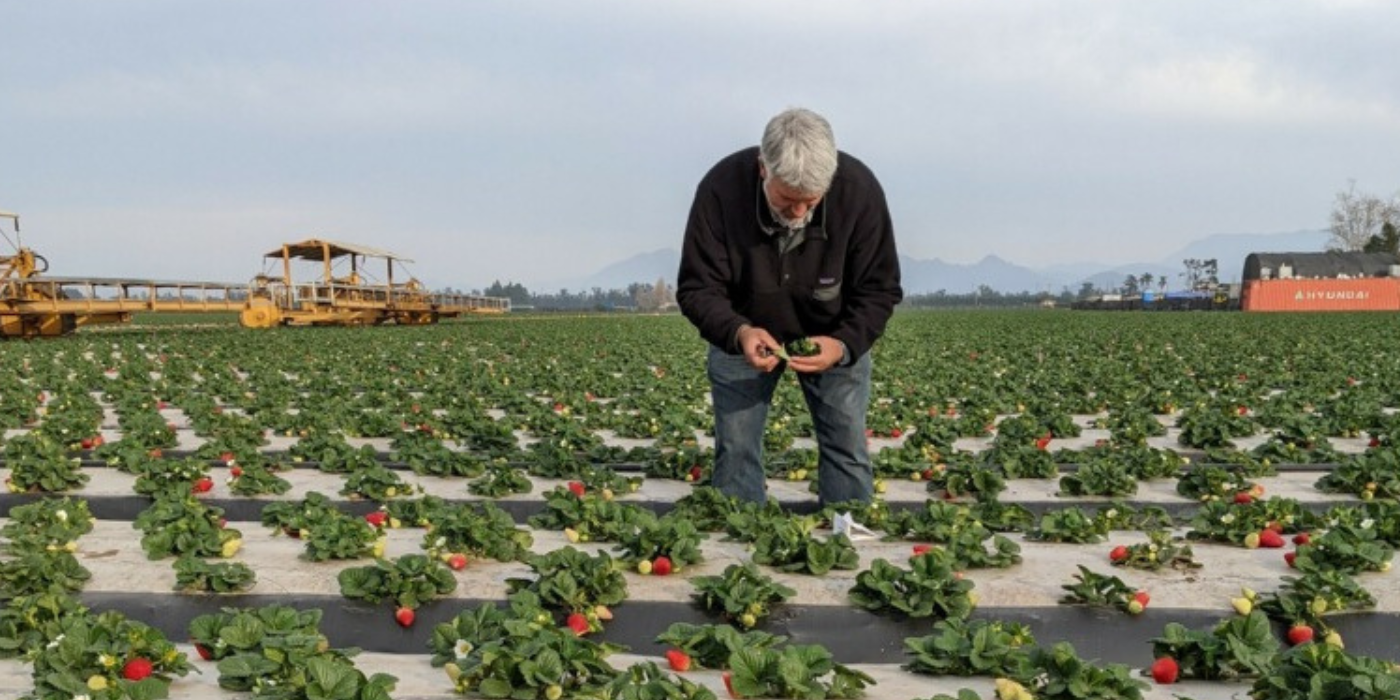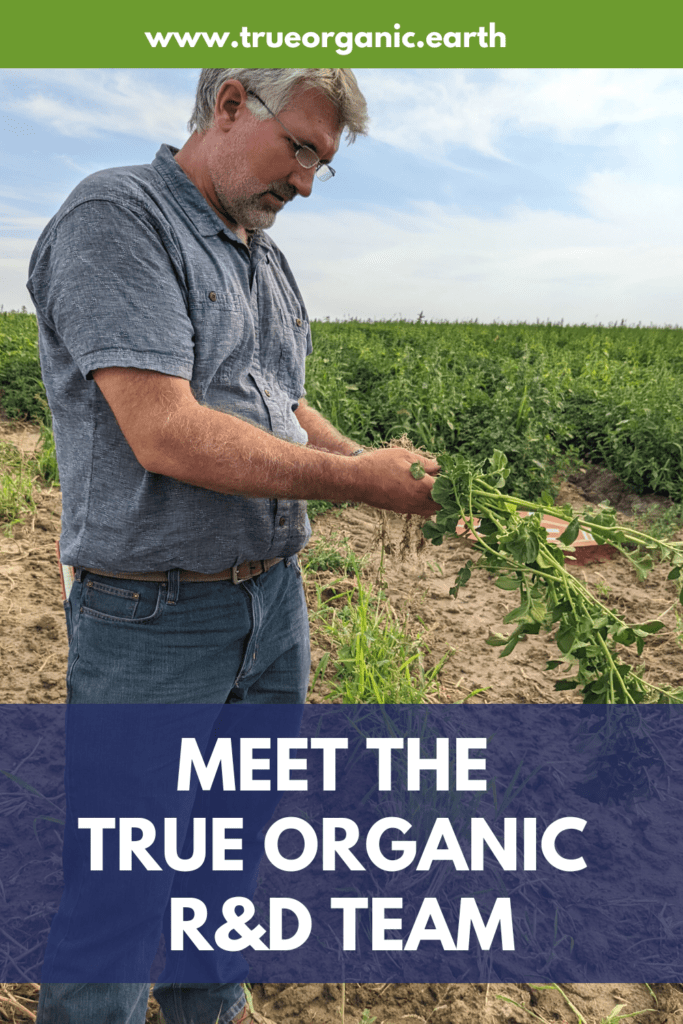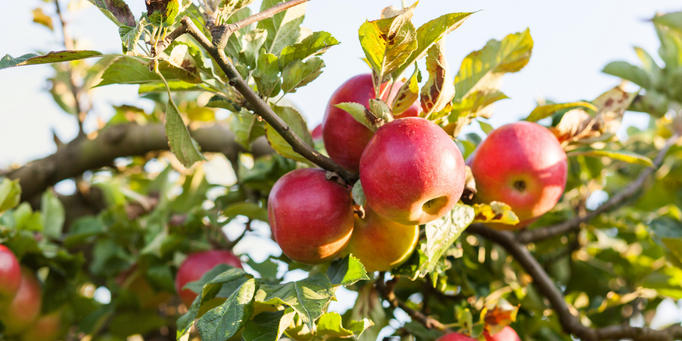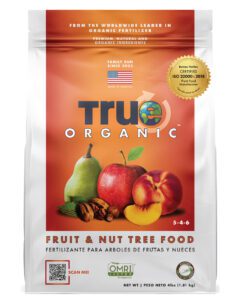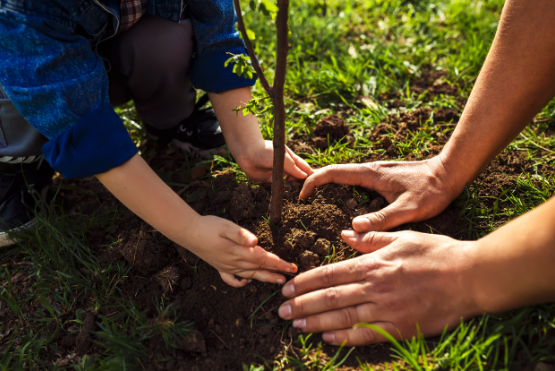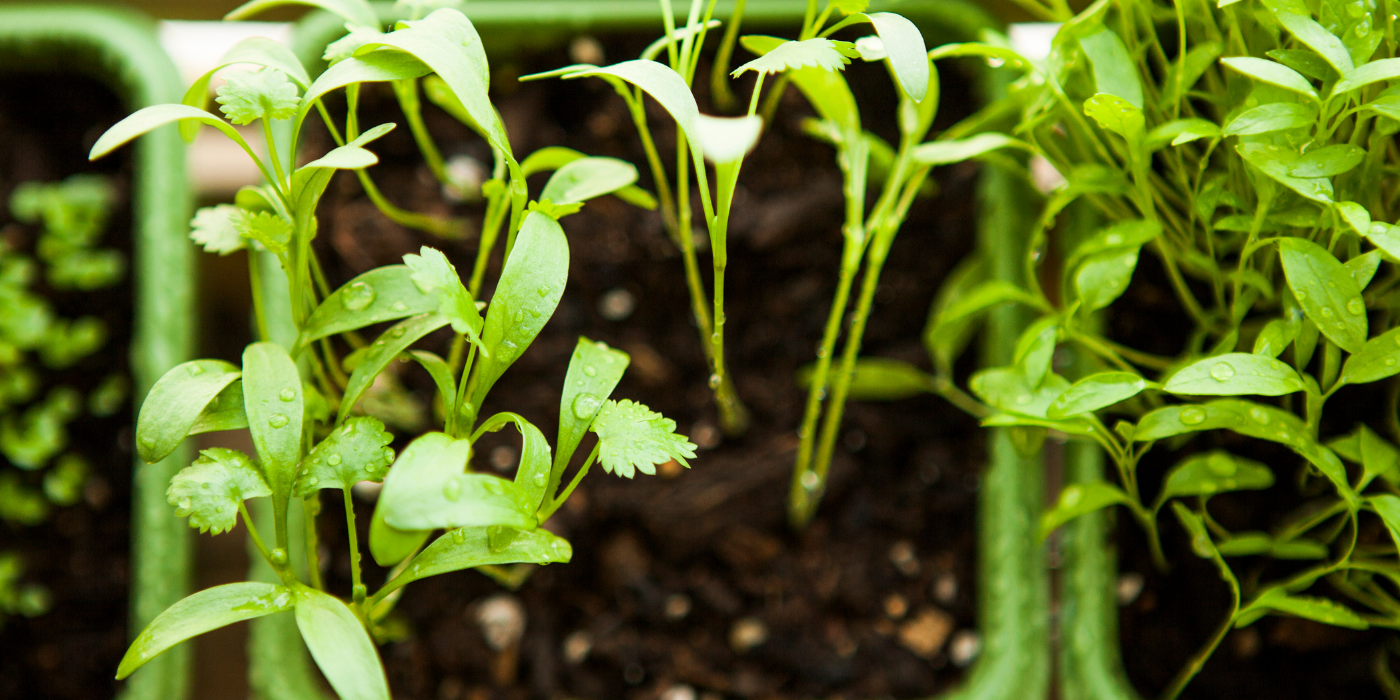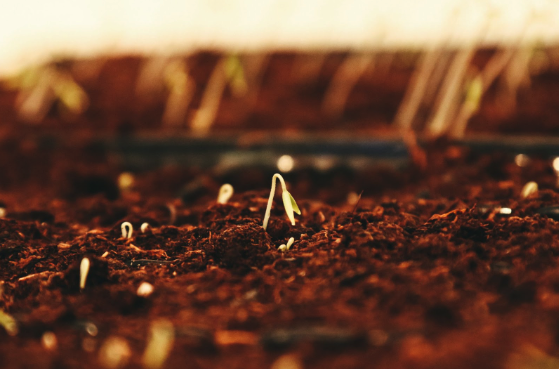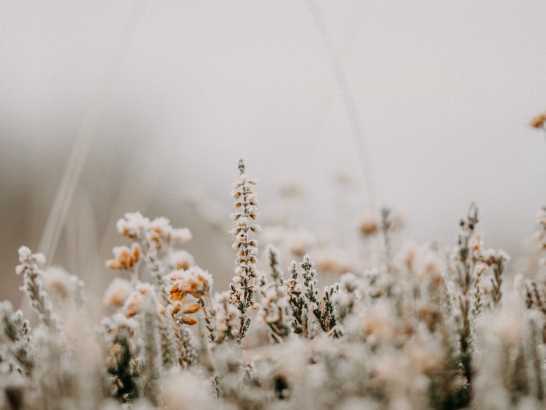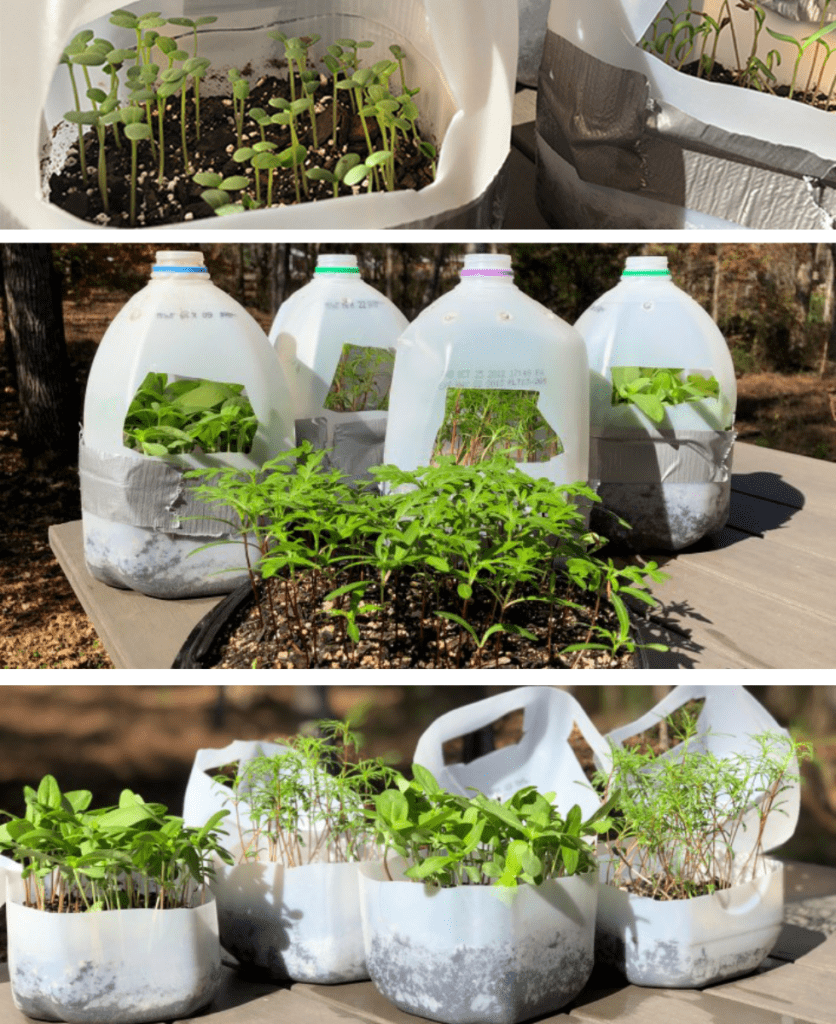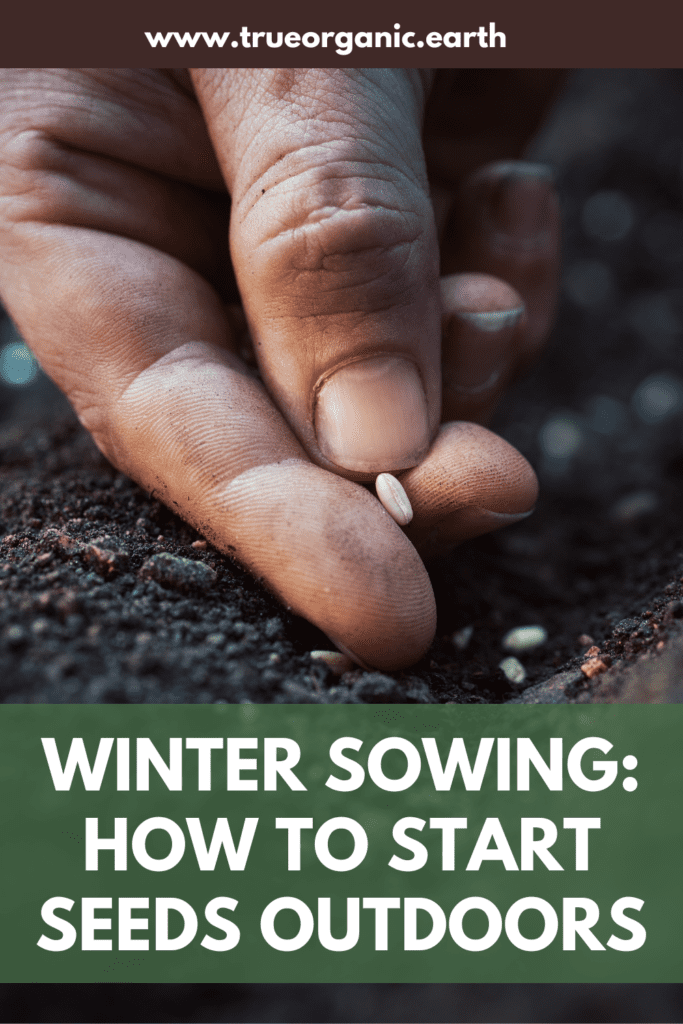Meet The True Organic R&D Team
Feb 15, 2023
Chancy Lanier
Meet The True Organic R&D Team
Our Research & Development Team at True Organic truly sets us apart. This crew of dedicated science and agriculture professionals works to find even better ways to deliver powerful, organic, food-safe plant foods to you — and to the large-scale farms we’ve been serving for decades.
So we thought it was due time for them to share the spotlight with the products they help develop.
From orchards and lettuce fields to chemistry labs and conferences, this team brings passion and positivity to everything they do. Meet our R&D Team!
Meet Mike Menes, PhD: Vice President Food Safety & Technology
Hello, Mike! What’s your role with True Organic?
I’m responsible for providing the systems and resources to manufacture a product at the highest quality standard. I am also a representative of True Organic in relation to the government and the wider organic industry.
Why is your work important to you?
In a few words: I can make a difference. I’m able to affect change and tell the world about it — like protecting the USDA Organic Seal and food/product safety (we’re proud to hold the highest possible standard for food safety), which are aspects that are important to me personally. We do this work with the objective to improve the lives of people in our company, the lives of people who buy our products, and to improve the planet.
A little more about me:
I am an avid woodworker. I learned some carpentry skills from my father and in a cabinet shop in college and in the summers after. I’ll try and make anything…I can’t guarantee that it’ll be very pretty, but it usually turns out okay.
Meet Ramy Colfer, PhD: Vice President, Research & Development / Agronomy
Hi, Ramy! What’s your role at True Organic?
I work to improve our understanding of the many benefits of True Organic products for
organic farmers: improving soil health and plant nutrient availability, bolstering plant health and resilience, and helping our customers succeed. I really enjoy working with growers (our customers), our sales team, our production team, and my excellent R&D and Agronomy team.
What do you love about your work?
We help grow amazing organic crops and make soil better too while giving a home to waste products. True Organic is a great company to work for and has very strong integrity: in our commitment to customer service, organic integrity, and food safety, and in giving strong, scientifically-based guidance to our customers. True is a world-changing company in the way we take agricultural byproducts, process them for premium quality and safety, then quickly deliver them on a massive scale to growers all over the country. When I see how much organic food we help grow, and how much carbon material is added to the soil every year because of True Organic products, it brings me pride and satisfaction.
We have a very tight family culture here. We work hard together and try to improve the company every day. True is an exciting company, growing incredibly over the last two decades, with great potential to grow even more. Our goals are lofty and our only limits are our imaginations.
A little more about me:
I love my family, I love my home and the place I live, and I love working in organic agriculture. I have a wonderful wife and three daughters that are all doing incredible things in the world. I really enjoy regular activities in our local mountains and ocean here on the Central Coast. There is rarely a week that goes by when I am not hiking in the mountains or surfing in the ocean. I am a person with great gratitude. I hope to help the world a little before I leave.
Meet Ehsan Toosi, PhD: Director of Research & Development
Hello, Ehsan! What’s your role with True Organic?
Apart from particular research directions that I lead, I work with the rest of the R&D team at our Helm, California facilities on projects as well as research facilities (research lab and greenhouse), but also with the Operations team and external partners, especially technical and research units.
Why is your work important to you?
Our team at True is dedicated to turning upcycled waste/by-products into premium inputs for use in intensive organic cropping systems. I am fortunate to be a part of this effort and work in the industry, given a number of environmental and agronomic benefits of organic cropping, and nutritional value of organic crops.
A little more about me:
Indulging myself anywhere outdoor in the Sierras is my primary interest when I get a chance.
Meet Andrew Pedersen: Central Valley Senior Agronomist
Hey, Andrew! What’s your role at True Organic?
I support our sales team, customers, and growers in understanding and using True Organic products. I also create crop fertility programs to help guide organic growers on how best to apply our products (like determining application rates and timings).
During the production season (February through October), I oversee trials on organic farms, mostly to compare fertility using True Organic products to another program the grower might be using. Many times, I’m comparing a new True product or program to other True products the grower is already using — that’s how we continuously improve the productivity of organic systems. We use soil and leaf tissue tests to determine nutrient availability, capture aerial imagery with drones using specialized sensors that can help compare plant health, and evaluate yield and quality (critical points, as they’re the bottom line for the grower). In the late fall and winter, I interpret, summarize, and present data from our trials to the sales team, customers, and growers.
What matters to you about your work?
I live in Tulare County, the heart of the San Joaquin Valley. This valley is one of the most productive agricultural regions in the world, specializing in nuts, grapes, fresh fruit, and a variety of vegetables. Growers in this region are facing tremendous challenges, the biggest of which is water availability for irrigation. I believe organic production has the potential to provide growers the opportunity to improve long-term economic profitability, while improving soil health and farming in a more sustainable way. Farming organically can be difficult, and resources about how to do it successfully are limited. True Organic has been and will continue to be an important resource for these growers as they transition to organic farming.
A little more about me:
My family and I are lucky to live on 4 acres. My wife, who is a veterinarian, has plenty of room for animals (horses, goats, and chickens) and I have a lot of space to grow my own fruits and vegetables. I have about 20 different fruit trees and grow a variety of vegetables year-round, thanks to California’s climate. It’s so satisfying to watch my 2 kids enjoying tomatoes, peaches, or mandarins that I grew and harvested myself. And since I started at True, I’ve got lots of free organic fertilizer to play with!
Meet Justin Russak, PhD: Senior Chemist
Hi, Justin! What’s your role at True Organic?
I have the privilege of taking ideas and turning them into useful products. The research begins in the R&D lab, which is equipped with all the instruments and tools we need to ensure our products are stable, compatible, and meet specifications. Working with production and engineering, products that are ready for primetime need to be translated from their small lab-scale tests to large-scale production. A good portion of my time is dedicated to supporting these efforts as well as many others at our facility in Helm, CA.
What do you love about your work at True?
It is extremely satisfying to work in an environment with like-minded people who inspire greatness. The work we put in as a team has a direct impact on the products we sell to organic growers. The final reward is seeing a grower’s product in the grocery store and putting it in my basket, knowing that in some small way I contributed to that process.
A little more about me:
I tackle the New York Times crossword daily — it’s been a thing for maybe 5 years or so now, along with the Spelling Bee and Wordle. If you know…you know.
Meet Margaret McCoy, PhD: PNW R&D Agronomist
Hey, Margaret! What do you do at True Organic?
During the summer, I do data collection and analysis including soil and tissue samples for trials and grower collaborators. We meet with growers to go over trial data and progress to help inform their organic production.
What do you love about your work at True?
I find happiness in helping growers and hopefully making a difference to the industries we work with. Organic farming is in my blood, and I want to honor those who have taught me or helped me along this path in life.
A little more about me:
I love to snowboard and I make wine from my own vineyard.
ccof foundation ccof foundation
Show us your True Organic Plants
#GrowWithTrue
www.trueorganic.earth
8 Best Fruit Trees for Your Home Garden
Jan 31, 2023
Chancy Lanier
8 Best Fruit Trees for Your Home Garden
Do you dream of relaxing in a dreamy orchard buzzing with bees and birds? Enjoying ripe fruit and relaxing under blossom-filled trees?
We created our Fruit & Nut Tree Food, the latest addition to the True Organic plant food family, to make your backyard orchard dreams come true!
Even if you only have room for one or two fruit trees, you can definitely grow delicious fruit in your home garden (or even indoors). With some forethought and research, even a small outdoor space can accommodate fruit trees.
How to choose?
Here’s what to consider before you commit to a fruit tree for your home garden:
Size & Space
How much space do you have for your tree(s)? Fruit trees range greatly in size and some can even be cultivated successfully in containers. Some dwarf fruit trees might grow to just 6-8 feet tall and 2 feet wide!
Choose types that will be easy to find room for as they grow and bear fruit.
Plant Hardiness Zone
Choose a type of fruit tree that thrives in your climate. Thankfully, there are fruit trees that love almost every Zone, even in cold and dry climates.
Soil Type
Is the earth in your yard sandy, acidic, loamy? Different varieties of fruit trees thrive in specific types of soil, so find out what kind of soil you’re working with before you buy any trees. Check out our blog with Agronomist Dr. Margaret McCoy, PhD for all the details on soil testing.
Pollination Requirements
Some trees are self-pollinating (like most of your garden crops) but some require cross-pollination. Non-self-pollinating trees won’t produce a good harvest without a “partner tree” to pollinate them.
If you choose a tree that needs to be cross-pollinated, you’ll either need to make sure there is another tree of the same species nearby (within 100 feet is ideal for bees) or you’ll need to hand-pollinate (which is much simpler than you might think, but still requires a bit of expertise and time). The pollination partner needn’t be the same variety of fruit, just the same species.
Learn more about pollination requirements for various crops with these helpful resources from Penn State University’s College of Agriculture Extension.
Your Favorite Fruits
As with any garden crop, grow what you love! While it can be fun to experiment with new crops and varieties, the most rewarding part of growing fruit trees is eating delicious, nutritious, sweet treats. So go with your favorites.
New to growing fruit trees? Try one of these:
Pear
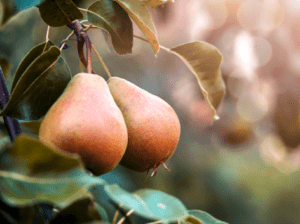
Like many fruit trees, pears need to grow for a few years before fruiting. Pear trees typically start bearing fruit after 3 years, but some take at least 7 years before they’ll give you fruit.
Because of their natural disease resistance, pear trees are ideal for growing organically. Like most fruit and nut trees, they’ll do well when fertilized twice a year: once in the spring and once in the fall. Use an organic fertilizer like our Fruit & Nut Tree Food, which is rich in nutrients like phosphorus, calcium, sulfur, and nitrogen.
Many varieties of pear tree are self-pollinating, too!
Apple
The classic apple tree is a home gardening favorite for good reason! Apple trees are generally easy to grow, high-producing, and hardy in lots of climates. One of the best trees for beginners, apples do require several years before they start bearing fruit — for some varieties, up to 8 years.
But like some other types of fruit trees, some apple varieties are “dwarf” trees that grow around 10-15 feet tall and can start fruiting after only 2-3 years.
Apples are non-self-pollinating (also known as “self-unfruitful”), so one lonely apple tree in the backyard might not yield fruit on its own. Plant another apple tree nearby or scope out your neighborhood to see if any neighbors are growing apples.
Fig
Figs are such a fun, underrated fruit and they’re shockingly simple to grow!
Fig trees thrive in many climates and can be kept in small spaces. Like pear trees, fig trees are very resistant to disease, are typically self-pollinating, and grow quickly — you don’t need to wait years for a fig tree to bear fruit.
Cherry

Most cherry trees start yielding fruit on their fourth year, so be ready to commit before you start putting cherry pie on the menu.
Birds love cherries, so be prepared to cover your trees after the flowering stage.
Plum
There are a surprising number of varieties of plum, so there’s sure to be one that fits your needs and your tastes. Depending on the variety, plum trees may be self-fertile or cross-pollinating, so be sure to commit to a type of plum tree you can care for properly.
Watch out for soil that doesn’t drain well when you’re growing plum trees, as they can be particularly sensitive to waterlogged soil.
Apricot
Juicy, sunset-colored apricots are a bit easier to grow than peaches and yield a whole lot of fruit. Best of all, they bloom early, so you’ll be eating apricots first thing in the springtime.
These delightful trees are self-pollinating and grow big branches full of luscious green leaves, perfect for lounging beneath.
Because of their early blooming nature, though, watch out for late frosts and cold snaps, which could damage flowering apricot trees.
Lemon
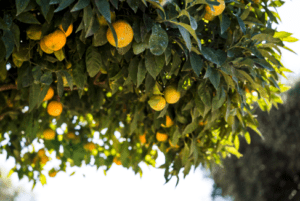
Lemon trees are great for container growing and can even be grown indoors with the right care. Indoor container lemon trees will stay under 4 feet tall. So cute!
They can grow happily in various kinds of soil (although they prefer slightly acidic soil) and are easy to care for. Most varieties will start bearing fruit in their third or fourth year.
Lemon trees are very cold-sensitive and cannot withstand frost, so be prepared to cover your lemon tree if you live in a place that gets frost.
Crabapple
Okay, not many people want to grow crabapple, but hear us out! Crabapple trees may not produce the yummiest fruit, but they are stunning additions to any landscape with their sweet-smelling blossoms of white, pink, and pale red.
Crabapple trees grow in a ton of different climates, and while they don’t like hot weather, some varieties can thrive in extreme cold, even in Zone 2a (Alaska!)
So what about that fruit? Crabapples (which technically just means an apple that is tiny — under 2 inches in diameter, to be exact) are super-tart and hard in texture. They’re not good to eat raw (unless you’re a bird or a squirrel), but you can make delicious jams, jellies, fruit butters, even crumble and crisps.
If you’re new to fruit trees or live in a cold climate, crabapples are a great place to start learning how to plant and care for these wonderful garden additions.
Show us your True Organic Plants
#GrowWithTrue
www.trueorganic.earth
Winter Sowing: How to Start Seeds Outdoors
January 14, 2023
Chancy Lanier
Do you like to start your garden with seeds? It’s a super gratifying way to grow plants!
You might have experience with direct sowing (planting seed right into the garden bed where they’ll remain), but starting seedlings outdoors through the winter is a nature-approved method that will become your new favorite garden trick.
It’s called winter sowing and it’s way easier than you think!
Benefits of Winter Sowing
Quick and low-maintenance
Winter sowing is a nearly “set it and forget it” method that gives you hardy, ready-to-plant crops for your spring garden. Preparing the containers is incredibly simple and family-friendly — a great project for kids.
Once you prep and plant your seeds, you’ll leave them outside for months to activate their ability to germinate (a process referred to as scarring or stratifying), watch them sprout into seedlings and harden off all by themselves right in upcycled, reusable containers.
Low-cost and sustainable
Winter sowing is low-cost, simple, and space-efficient. The only materials you need are cleaned plastic containers like milk jugs, scissors, and permanent markers. Oh, and seeds and soil, of course.
It’s a great way to save money on your gardening hobby: seeds are way less expensive (sometimes they’re even free if you use a seed exchange or library). Plus, you’ll have control of the whole process, ensuring that your plants are organic, hardy, and ready to go in the ground.
Find a seed library or exchange near you with the Seed Librarian’s locator map or the Seed Savers Exchange search feature — or do a quick internet search. If you can’t find anything online, visit your local nursery to consult a gardening expert about seed exchanges in your neighborhood. Or start saving your own seeds!
Can’t find an organic seed exchange in your hometown? Start one! Get some pointers from our friends at Phoenix Seed Swap, a small grass-roots seed saving and sharing project in Arizona.
Creates hardy, healthy seedlings
The hardening off process that indoor-grown seedlings need prior to being planted in the ground can be tricky, time-consuming, and stressful.
Seedlings started outside don’t need to be hardened off before planting in the garden — the process of winter sowing does that naturally.
As they germinate and grow outside in natural weather conditions (protected in their containers from getting washed away by rain or dug up by hungry animals), they’re getting used to natural weather conditions and being nourished by natural light. All of that acclimates them to a life outside! They’ll be hardier, stronger, and ready to be happily transplanted into the garden come spring.
No fancy equipment needed
And no greenhouse required, either! Winter sowing is ideal for those with limited indoor space for seed starting. No special lighting or equipment is required for germination.
Winter Sowing Basics
How does winter sowing work?
Winter sowing means planting seeds and tending seedlings in outdoor containers before spring. This process mimics the natural process of seed germination.
Most seeds are dormant and need something to trigger their “wake-up call” before they can germinate. (Thank you, winter!)
Winter sowing does not mean directly sowing your seeds in the ground. They’d be quite unlikely to make it to spring in that case.
What do I need?
- Containers: Gallon milk jugs are the most popular, but other plastic containers with lids work, too.
- Space: You don’t need much! A corner of your yard will do.
- Seeds
- Potting soil
What crops should I sow?
You’ll be surprised at how many varieties are ideal for winter sowing. Many flowering plants, herbs, and edible crops can be sown outside in winter.
So how can you be sure a seed is good for winter sowing?
Start by looking for seeds that are considered “hardy” in your USDA Plant Hardiness Zone.
If you’re using store-bought or online-ordered seeds from a packet, the information on that packet is all you need. You can also get a ton of helpful info from any seed catalog. Even if you aren’t ordering your seeds from a catalog, you can get a free catalog mailed to you from almost any seed company. We recommend going organic!
Look for terms like: reseeding, self-sowing, hardy, withstands frost, sow outdoors in early spring, stratification, and scarification. That means the seed is good for outdoor winter sowing.
When should I sow my seeds?
It depends greatly on the conditions in your area, which you can learn about by identifying your USDA Plant Hardiness Zone (sometimes referred to as Garden Zone). Check it out here.
Generally, your best bet to winter sow perennials and hardy annuals will be December through March (later in that range if you live in a colder climate). These seeds need to chill out in cold temperatures and moist conditions for a while in order to germinate in spring.
For less hardy plants like veggies and other tender annuals, March and April are good times for winter sowing. Those seeds don’t need a cold period before germination.
Step-by-Step Winter Sowing
Prepare containers
- Clean: Wash a milk jug or other translucent plastic container with soap and rinse well.
- For milk jugs: With a serrated knife or box cutter, just below the handle, cut almost all the way around the jug. Leave about 2 inches as a hinge, so the top part of the jug can open easily. (Skip this step for plastic takeout containers, but save the lid.) You can toss out the milk jug lid.
- Make drainage holes in the bottom of the container. If you’re using a container with a lid, poke a few holes in the lid, too.
Prepare soil
- Fill container with at least 4 inches of organic potting mix. Avoid garden soil which may contain pathogens and weed seeds.
- Lightly water soil and allow it to drain.
- You don’t need to add plant food until the seed germinates and sprouts. Once you have a few leaves, you can use True Organic Preplant Food.
Sow and seal
- Follow the directions on the seed package to sow your seeds.
- If using milk jugs, seal the container around the “seam” with light-colored outdoor-style tape (remember, you want lots of sunlight to get in, so don’t use something like black tape, which will block out light.). Leave the top of the milk jug off so water can enter.
- If using a lidded container, place the lid back on, double-checking that water can get into the holes in the lid.
“Set and forget”
- Label your containers with type of seed and sowing date.
- Choose a secure location outside that gets lots of sun all day and gets some rain or snow. Do not place your containers under an awning — they need moisture!
- Leave them alone! Revisit them when your seedlings start germinating in spring.
A few things to watch out for:
Early spring or a warm spell
If seeds get a burst of warm weather, they could germinate too soon, leaving baby seedlings vulnerable to returning cold weather.
Lack of sun
Be sure the location you choose has good sun all day, especially as Winter days are still short.
Wind and other extreme weather
If a wind storm is coming, move your containers into the garage overnight or place them in a heavy crate until the conditions pass.
Animals
Although your seeds are protected by their containers, animals like mice, birds, and squirrels can be relentless (and quite clever) when it comes to getting some winter nosh. It’s worth checking on your containers every so often to make sure animals aren’t fussing with them or chewing/clawing at them — and moving them to a more secure location, if so.
Show us your True Organic Plants
#GrowWithTrue
www.trueorganic.earth

